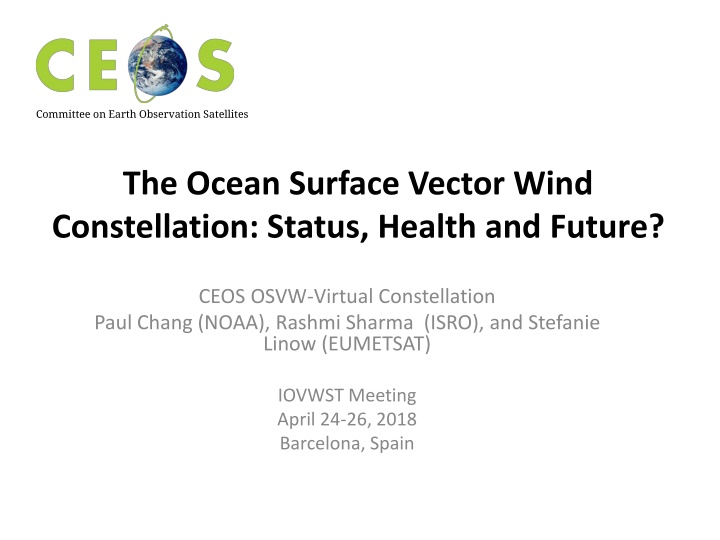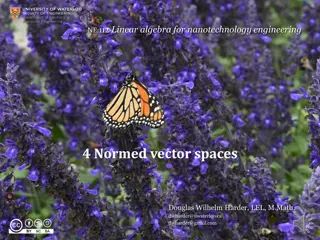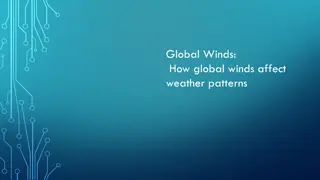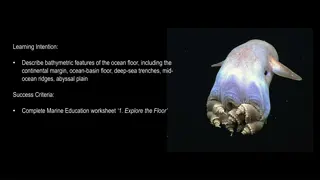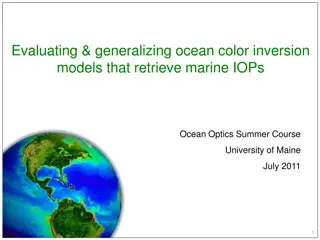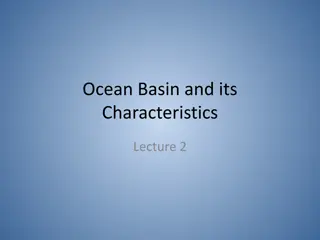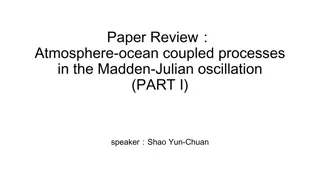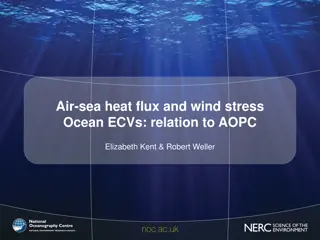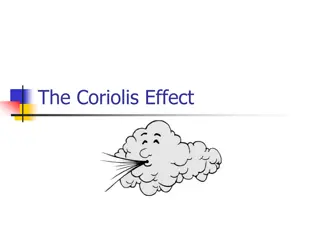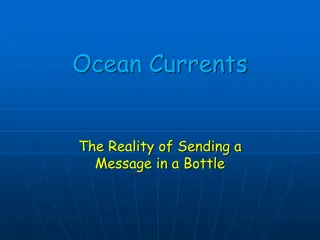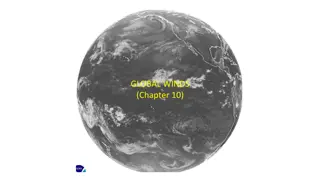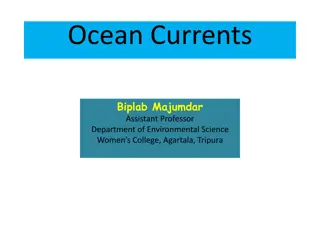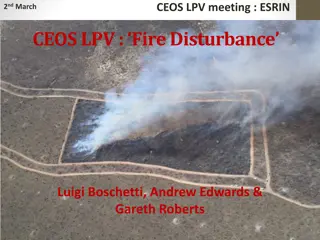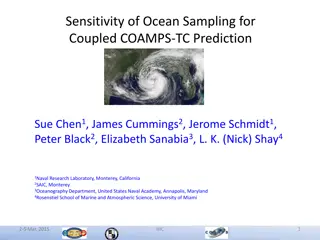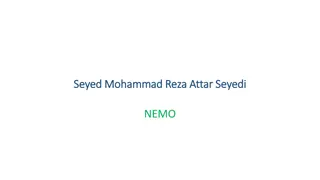CEOS Ocean Vector Surface Winds: Constellation Status and Outlook
The Committee on Earth Observation Satellites discusses the current status, health, and future plans for the Ocean Surface Vector Wind Constellation. Key topics include the availability of real-time data, upcoming satellite launches, and the operational overview of the Virtual Constellation. Insights from NOAA, ISRO, and EUMETSAT shed light on advancements in ocean surface wind measurements. Explore the timeline, mission coverage assessments, and collaborations driving this vital Earth observation initiative.
Download Presentation

Please find below an Image/Link to download the presentation.
The content on the website is provided AS IS for your information and personal use only. It may not be sold, licensed, or shared on other websites without obtaining consent from the author.If you encounter any issues during the download, it is possible that the publisher has removed the file from their server.
You are allowed to download the files provided on this website for personal or commercial use, subject to the condition that they are used lawfully. All files are the property of their respective owners.
The content on the website is provided AS IS for your information and personal use only. It may not be sold, licensed, or shared on other websites without obtaining consent from the author.
E N D
Presentation Transcript
Committee on Earth Observation Satellites The Ocean Surface Vector Wind Constellation: Status, Health and Future? CEOS OSVW-Virtual Constellation Paul Chang (NOAA), Rashmi Sharma (ISRO), and Stefanie Linow (EUMETSAT) IOVWST Meeting April 24-26, 2018 Barcelona, Spain
OSVW Constellation Status and Health ASCAT (METOP-A&B) Open and near real-time data access ASCAT available through the EPS-SG(SCA) launch METOP-C scheduled for a September 2018 launch SCA (ASCAT Follow-On, EPS-SG) ~2022/23 SCATSAT September 2017 (Injected into ~9:45 am local crossing time and drifting to ~8:45 am) Open and near real-time data access (April 24, 2017) OSCAT follow-on (OceanSat-3&3A) ~2018/2019 CMA will be providing OSVW measurements starting with their FY-3E launch (late 2018) Committee on Earth Observation Satellites
CEOS Ocean Vector Surface Winds Virtual Constellation (OSVW-VC) Current Status and Outlook 10 11 12 13 14 15 16 17 18 19 20 21 22 23 24 Launch 10/06 METOP-AEurope METOP-CEurope METOP-BEurope Post EPS Europe C-band Oceansat-3A India 06/99 03/14 QSCAT USA Oceansat-3 India Oceansat-2India ScatSatIndia HY-2BChina HY-2AChina CFOSAT China/France HY-2CChina RapidSCAT USA Ku-band Meteor-M N3 Russia Meteor-MP 3 Russia FY-3E China Combined C- and Ku-band FY-3G China Advanced Scat series India? Proposed Design Life Extended Life Design Life Extended Life Operating Approved Note: Near real-time and open data access not assured for all missions listed
Ocean Vector Surface Winds Constellation Local time coverage assessment (ground track) - NRT data access Launc h 10 11 12 13 14 15 16 17 18 19 20 21 22 23 24 01- 03 DESCENDING NODE CROSSING TIME 03 - 05 06:00 HY-2 A/B 06:00 FY-3E/G 06:00 2F-SCAT ISRO? 05- 07 07:00 CFOSAT 08:45 SCATSAT 07- 09 WMO observation cycle requirement: 6 h 09:30 EPS (ASCAT) 09:30 EPS-SG (SCA) 09- 11 11- 13 12:00 OceanSAT 2/3 12:00 Meteor M/MP Proposed Design Life Extended Life Design Life Extended Life Operating Approved Source: WMO OSCAR database and direct interactions with agencies Committee on Earth Observation Satellites
OSVW-VC Summary The OSVW Constellation is anchored by current and planned missions of EUMETSAT and ISRO The CEOS OSVW-VC advocates: Open and near real-time data access Coordination of orbits to optimize temporal sampling Cross calibration of missions Cal/val and data product standards Outreach and education Additional information including Terms of Reference can be found at http://ceos.org/ourwork/virtual-constellations/osvw/ While each agency needs to work within its resource and political environment, international groups such as CEOS can help communicate objectives and recommendations of the international community directly to agencies Committee on Earth Observation Satellites
Optimum (minimum) OSVW constellation 2015 IOVWST meeting recommendation At least 3 scatterometers in orbits designed to roughly meet WMO requirements (observations every 6 hours) One instrument in a non-sun-synchronous orbit for sampling the diurnal cycle, better mid-lattitude sampling and provide inter-calibration A white paper describing and justifying the oceanography and climate requirements for the optimum OSVW constellation was going to be developed through the IOVWST. Is this still the case?
The OSVW Constellation Future? Questions posed at the 2017 OSVW-VC meeting Is the business case for satellite OSVW strong enough? Satellite SSH, SST(IR), rain/TPW, visible/IR imagery, and microwave soundings appear to be considered core measurement capabilities, but is this the case for satellite OSVW? What needs to be done to improve the chances of realizing the optimum (minimum) satellite OSVW constellation?
Do We Have a Sufficient Business Case for Satellite OSVW? Some Loosely Correlated Thoughts Who owns satellite OSVW? Oceanography? Meteorology? Three use categories To monitor and understand climate scale phenomenon (NWP reanalysis fields tend to be used) To monitor and understand short time scale weather/phenomena (oper. weather) To further our understanding of basic physical processes (scientific research) The constellation is relatively healthy in the short term. What happens if budgets become tight? The two current anchors in the OSVW constellation are ISRO and EUMETSAT EUMETSAT operational satellite agency justification is mainly NWP ISRO research agency with some operational components CMA (operational agency) will launch its first OSVW instrument in FY-3E Passive microwave is in a similar predicament touches many observing system requirements but a potential gap still looms ahead Is operational weather forecasting enough of a justification? If not why not? Operational weather forecasting continues regardless of whether data is available or not Altimeter synonymous with sea level rise but the oper. weather forecasting/monitoring value is SWH Vis/IR imagery self explanatory SST fisheries and climate but focus is on IR while microwave SST (all-weather) struggles Do we need to build a stronger business case for agencies to help justify current and future missions Concern that oper. weather monitoring and forecasting may not be sufficient by itself in the future An agency needs to be responsive to its own political and fiscal environment, but perhaps providing supporting material of the economic and security benefits of core observing system capabilities would be helpful?
